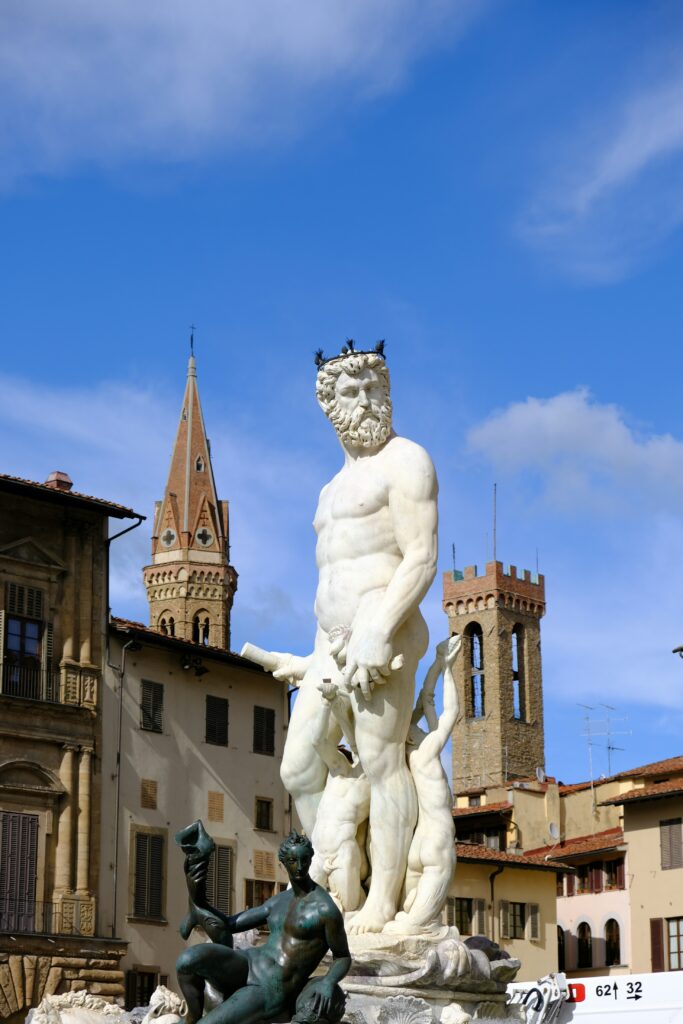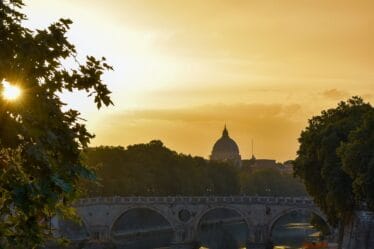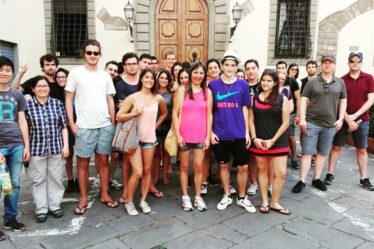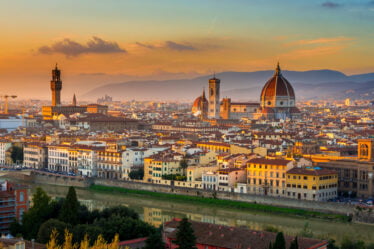

Florence Medieval Running Tradition: A Sacred Race Through History
In the heart of medieval Florence, the Florence Medieval Running Tradition was more than just a celebration—it was a unique blend of faith, sport, and community spirit. Every year on October 8th, the city came alive to honor Santa Reparata, one of its co-patron saints. This significant date commemorated the legendary victory over the Goths in 406 AD, when—according to local tradition—the saint miraculously appeared in the sky during the battle, giving courage to the Florentines.
From Faith to Festivity: The Bravio Race
Among the various religious ceremonies and popular festivities, one particular event stood out: a unique footrace called the Bravio. This event truly embodied the heart of the Florence Medieval Running Tradition. Unlike an ordinary race, the Bravio was a competitive and symbolic contest. Participants ran through the streets of Florence with one clear goal: to win a precious cloth banner—the “bravio”—which symbolized honor, faith, and devotion.
Moreover, it’s important to highlight that this was not just about physical endurance. Rather, it was also a deeply spiritual act, reflecting the city’s gratitude to Santa Reparata. Therefore, the Bravio became both a religious offering and a public spectacle.
The Vibrant Atmosphere of Medieval Florence
Furthermore, the atmosphere surrounding the race was electric. As part of the Florence Medieval Running Tradition, the streets filled with enthusiastic crowds, while the sound of ringing bells echoed through the air. People gathered in large numbers, creating a festive mood that mixed religious devotion with fierce competition.
In addition, local families often supported their neighborhood runners, adding an extra layer of civic pride to the event. The race route wound through Florence’s narrow streets, transforming the entire city into an open-air stage.
From Florence to Montepulciano: The Evolution of the Bravio
Interestingly, while the original Bravio race in Florence eventually faded, its legacy continued elsewhere. Today, the Bravio delle Botti in Montepulciano is far more famous. However, it’s crucial to remember that the roots of this barrel-rolling competition lie in the Florence Medieval Running Tradition.
For example, in Montepulciano, the race now involves rolling heavy wine barrels uphill through the town’s streets, but the concept of competing for a symbolic prize remains the same. Therefore, both cities share a historical link that is often overlooked by visitors.
To dive deeper into this topic, you can explore:
- The story of Santa Reparata, whose legacy shaped much of Florence’s religious landscape.
- The exciting Bravio delle Botti in Montepulciano, showcasing how the tradition evolved.
- A detailed overview of Florence’s medieval festivals, perfect for understanding the city’s cultural roots.
- The significance of Florence’s patron saints in local identity and history.
The Lasting Echoes of a Tradition
In conclusion, even though the original Bravio is no longer run in Florence, the Florence Medieval Running Tradition continues to live on in memory and historical accounts. Moreover, it remains a vibrant reminder that in the Middle Ages, even running became a sacred act—an event where faith, folklore, and festivity were in perfect harmony.
Today, as visitors walk through Florence’s ancient streets, they are, perhaps unknowingly, retracing the very same paths once thundered by the runners of the Florence Medieval Running Tradition.



